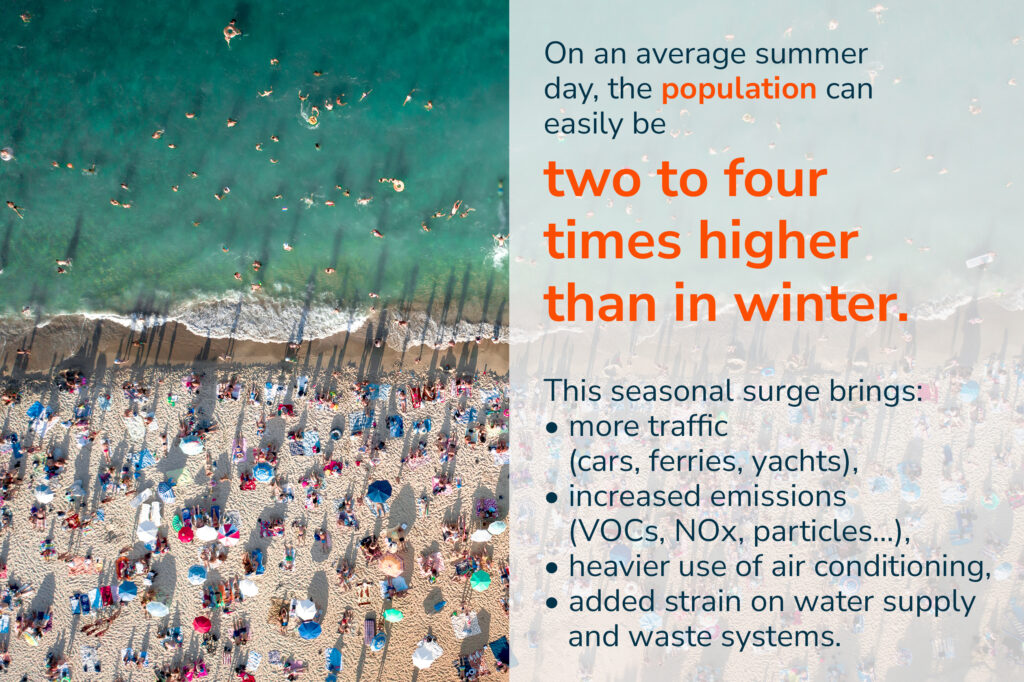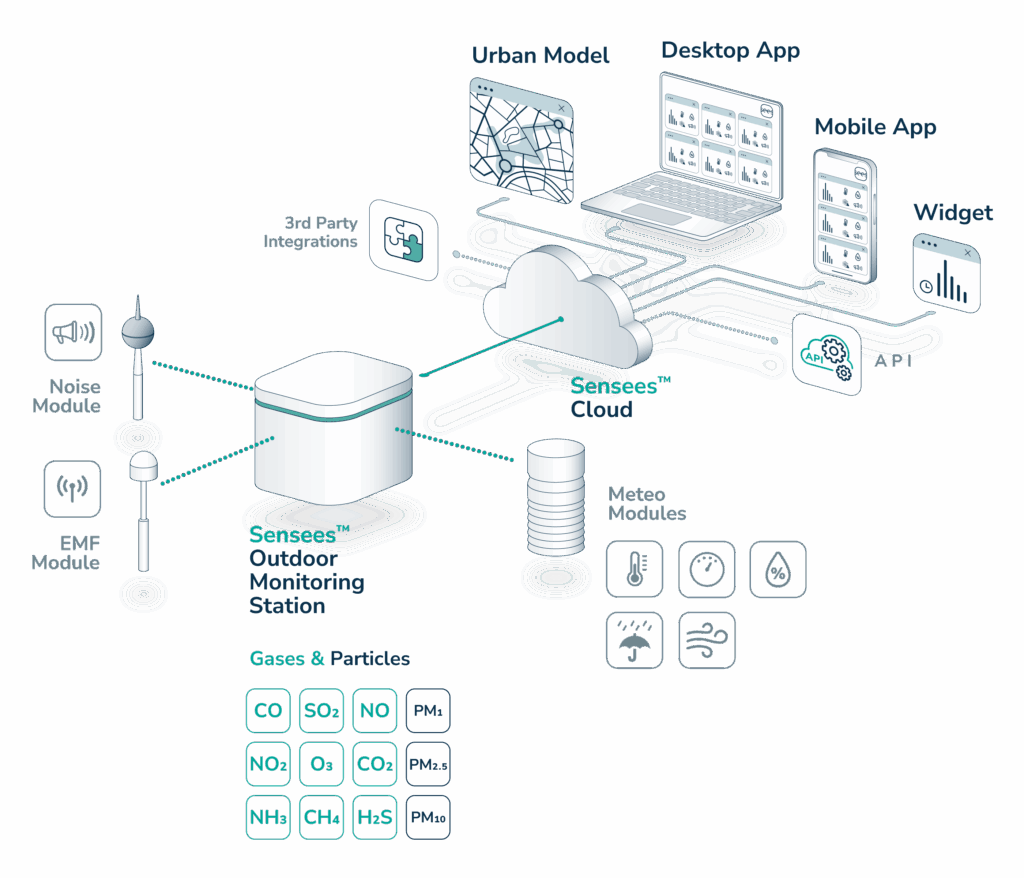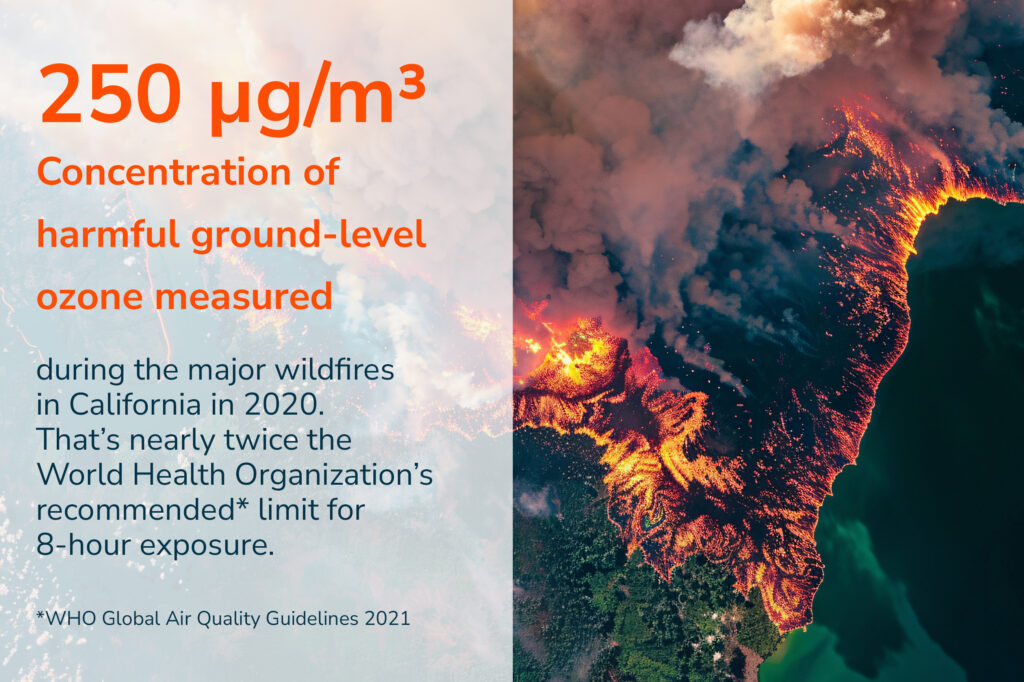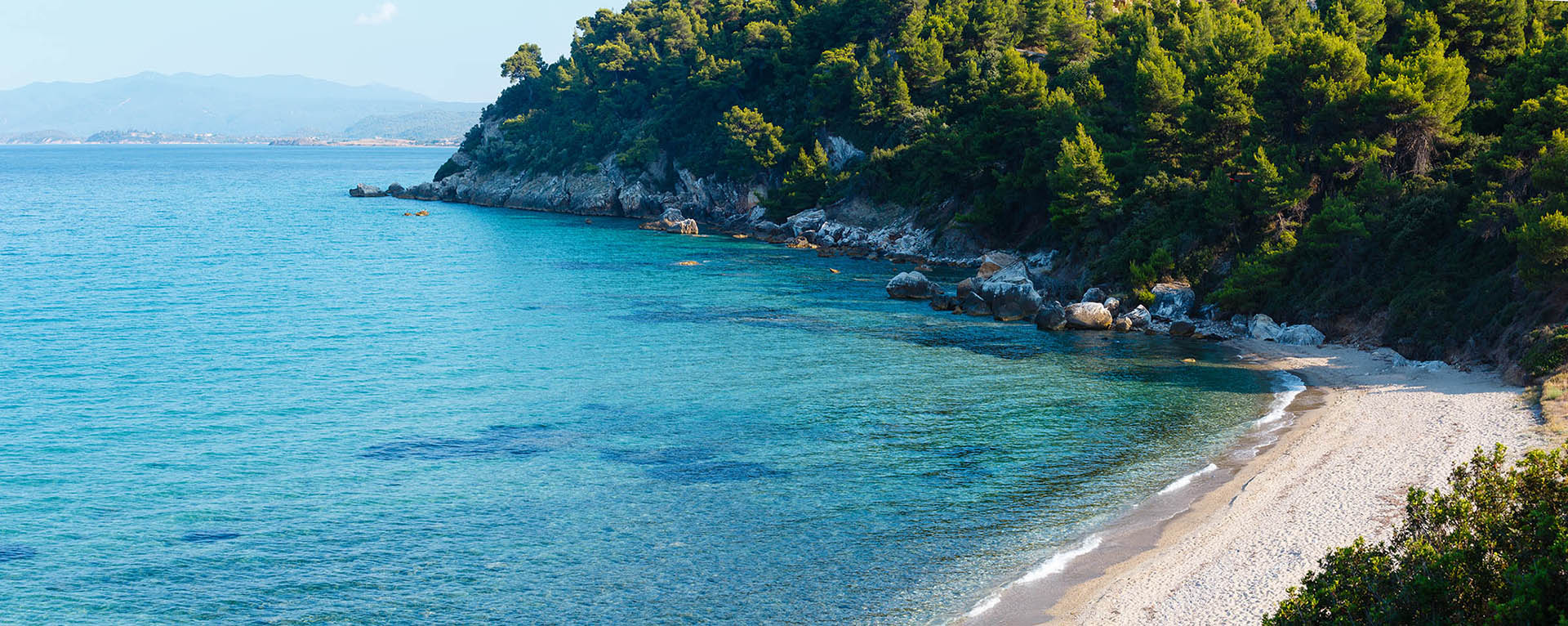When we think of summer on the coast, the first image is usually one of relaxing on the beach; followed by crowds in historic centers and busy ports. But behind the postcard view, there’s another reality, one that’s not immediately visible but greatly affects quality of life and health: changes in air quality.
More people – more traffic – more emissions
Coastal tourist towns experience intense seasonal pressure during the summer. The number of people multiplies, along with the number of vehicles, boats, air conditioners and other emission sources. Add in sunny, warm weather and you’ve got a perfect recipe for the buildup of harmful substances in the air — especially ground-level ozone.
Ground-level ozone: The invisible summer pollutant
The word “ozone” usually reminds us of the protective layer in the atmosphere that shields us from harmful UV radiation. But ozone at ground level, so-called tropospheric ozone, has a very different and far less beneficial role. It forms when sunlight triggers chemical reactions between nitrogen oxides (NOx) and volatile organic compounds (VOC). In coastal towns, the main sources of these pollutants are vehicles, ships and ferries, industrial and energy facilities, and fuel or chemical vapors.
In summer, with intense sunlight and higher emissions, ozone levels can reach harmful concentrations. Even though we can’t see or immediately smell it, ground-level ozone:
- irritates the eyes and respiratory system,
- reduces lung function,
- increases risk for people with asthma or COPD,
- contributes to the “smog” typical of hot and busy days.
That’s why ground-level ozone is considered one of the most dangerous urban pollutants in summer.
A local example: Summer on Hvar
According to the 2021 census, the City of Hvar has 10,678 residents. But by June 2025, it recorded 37,173 arrivals and 121,244 overnight stays, an increase of over 5% compared to the same period the previous year. That means in a single summer month, the number of people in this island city exceeds the permanent population by more than threefold.

All of these affect the local microclimate and create conditions for the formation of ground-level ozone, especially when combined with intense midday sunlight.
What happens in one city… doesn’t stay there
Although ground-level ozone is formed locally, it travels with air currents and affects air quality far from its source.
One documented example comes from Spain: ozone produced in Barcelona, a major tourist and traffic hub, travels inland and degrades air quality in the Vic valley – some 70 kilometers away!
This shows that air pollution in one city can harm surrounding towns and rural areas — even regions that don’t produce high emissions themselves. This “travelling” nature of pollutants like ozone highlights the importance of coordinated and collective action among local communities, cities and states. Only through continuous monitoring, data sharing and aligned measures can we truly reduce population exposure and protect air quality on a wider scale.
Why data changes the game
Solving this problem doesn’t begin with action, but with insight. In order to make informed decisions, we need to know what’s happening in the air we breathe — and not just in general, but locally, in real time, and with trend analysis.
That’s where the Sensees Outdoor Air Quality Monitoring System comes in! A professional solution for monitoring multiple air quality and environmental parameters outdoors: CO, SO₂, NO, NO₂, O₃, CO₂, NH₃, CH₄, H₂S, particles (PM1, PM2.5, PM10), temperature, humidity, atmospheric pressure, noise and electromagnetic fields.

Sensees enables cities to:
- monitor ozone, particles, temperature, pressure, humidity, CO₂ and more,
- connect pollution data with traffic, weather and tourist activity,
- visualize air quality across neighborhoods or port areas,
- compare data from different time periods.
Using 3D maps, dynamic visualizations, mobile sensors and time-lapse data, the Sensees platform helps identify pollution sources and trends, and supports realistic, sustainable measures to protect air quality.
When technology goes on vacation too
Many cities, including Hvar, are already investing in outdoor sensors and smart platforms to monitor air quality. These systems provide a foundation for concrete plans and policies, such as reducing emissions, optimizing traffic and improving public space management during the busy summer months.
For example, real-time air monitoring allows authorities to adjust traffic patterns or restrict certain vehicles during critical hours. Green zones can be planned, and trees planted in areas where pollutant levels are highest.
Such smart strategies are already being implemented in several Mediterranean cities, where summer tourism drastically increases traffic and emissions.
This approach not only reduces the negative environmental impact of tourism, but also raises awareness of the importance of clean air … not just in summer, but all year long.
Wildfires Don’t Help
Hot, dry summers create the perfect storm, not just for vacationers, but also for wildfires. And when wildfires break out, they don’t just destroy forests: they also release large amounts of precursor gases like nitrogen oxides (NOx) and volatile organic compounds (VOCs). Under intense sunlight, these gases fuel the formation of ground-level ozone.
That’s why ozone spikes are often recorded not only in cities, but also in remote areas affected by wildfire smoke. The problem travels with the wind.
Coastal Croatia, like many Mediterranean regions, is no stranger to summer fires. In addition to direct damage, they contribute to one more invisible threat: dangerous air pollution that affects both locals and visitors.

Clean air as tourist capital
The importance of air quality is increasingly coming into focus, and for good reason. It affects citizens’ health, tourists’ experience, long-term sustainability of cities, and ultimately the success of the tourist season itself.
Tourism and clean air can must go hand in hand, but only if we know what’s going on.
By collecting and analyzing localized air data, with the help of smart sensors and advanced platforms like Sensees Environmental, cities can manage their environment in a strategic and responsible way.
Because the air we breathe is no longer invisible once we turn it into data.

